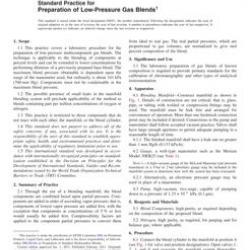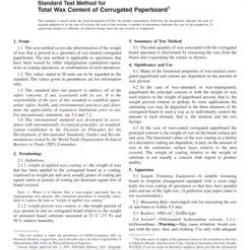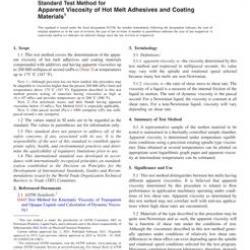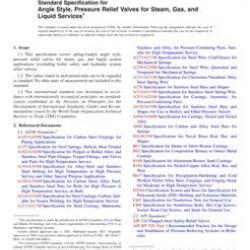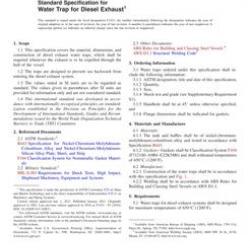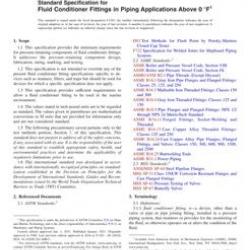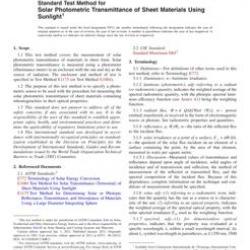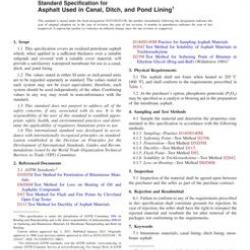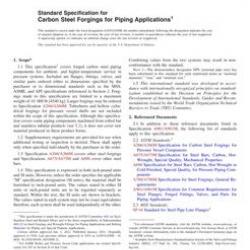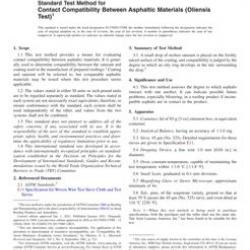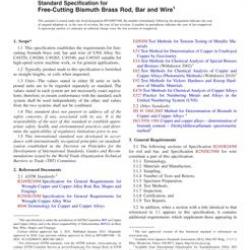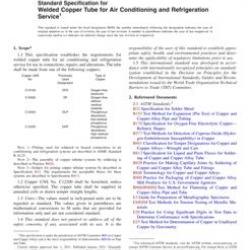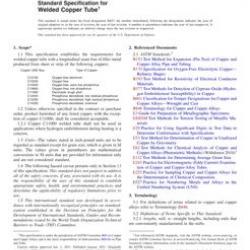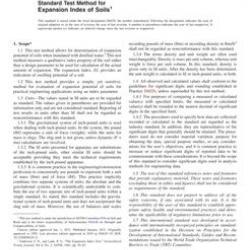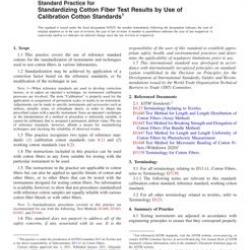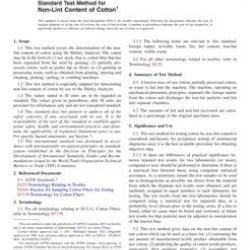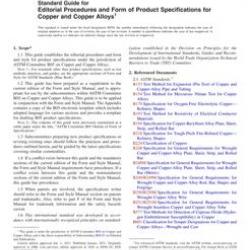Cart
0
0
item(s)
-
$0.00
No products
To be determined
Shipping
$0.00
Total
Quantity
Total
Product successfully added to your shopping cart
There are 0 items in your cart.
There are 0 items in your cart.
Total
ASTM C1869-18(2023)
ASTM C1869-18(2023) Standard Test Method for Open-Hole Tensile Strength of Fiber-Reinforced Advanced Ceramic Composites
standard by ASTM International, 05/01/2023
Reduced price!
M00011054
New product
Full Description
1.1 This test method determines the open-hole (notched) tensile strength of continuous fiber-reinforced ceramic matrix composite (CMC) test specimens with a single through-hole of defined diameter (either 6 mm or 3 mm). The open-hole tensile (OHT) test method determines the effect of the single through-hole on the tensile strength and stress response of continuous fiber-reinforced CMCs at ambient temperature. The OHT strength can be compared to the tensile strength of an unnotched test specimen to determine the effect of the defined open hole on the tensile strength and the notch sensitivity of the CMC material. If a material is notch sensitive, then the OHT strength of a material varies with the size of the through-hole. Commonly, larger holes introduce larger stress concentrations and reduce the OHT strength. 1.2 This test method defines two baseline OHT test specimen geometries and a test procedure, based on Test Methods C1275 and D5766/D5766M. A flat, straight-sided ceramic composite test specimen with a defined laminate fiber architecture contains a single through-hole (either 6 mm or 3 mm in diameter), centered by length and width in the defined gage section (Fig. 1). A uniaxial, monotonic tensile test is performed along the defined test reinforcement axis at ambient temperature, measuring the applied force versus time/displacement in accordance with Test Method C1275. Measurement of the gage length extension/strain is optional, using extensometer/displacement transducers. Bonded strain gages are optional for measuring localized strains and assessing bending strains in the gage section. FIG. 1 OHT Test Specimens A and B
 1.3 The open-hole tensile strength (SOHTx) for the defined hole diameter x (mm) is the calculated ultimate tensile strength based on the maximum applied force and the gross cross-sectional area, disregarding the presence of the hole, per common aerospace practice (see 4.4). The net section tensile strength (SNSx) is also calculated as a second strength property, accounting for the effect of the hole on the cross-sectional area of the test specimen. 1.4 This test method applies primarily to ceramic matrix composites with continuous fiber reinforcement in multiple directions. The CMC material is typically a fiber-reinforced, 2D, laminated composite in which the laminate is balanced and symmetric with respect to the test direction. Composites with other types of reinforcement (1D, 3D, braided, unbalanced) may be tested with this method, with consideration of how the different architectures may affect the notch effect of the hole on the OHT strength and the tensile stress-strain response. This test method does not directly address discontinuous fiber-reinforced, whisker-reinforced, or particulate-reinforced ceramics, although the test methods detailed here may be equally applicable to these composites. 1.5 This test method may be used for a wide range of CMC materials with different reinforcement fibers and ceramic matrices (oxide-oxide composites, silicon carbide (SiC) fibers in SiC matrices, carbon fibers in SiC matrices, and carbon-carbon composites) and CMCs with different reinforcement architectures. It is also applicable to CMCs with a wide range of porosities and densities. 1.6 Annex A1 and Appendix X1 address how test specimens with different geometries and hole diameters may be prepared and tested to determine how those changes will modify the OHT strength properties, determine the notch sensitivity, and affect the stress-strain response. 1.7 The test method may be adapted for elevated temperature OHT testing by modifying the test equipment, specimens, and procedures per Test Method C1359 and as described in Appendix X2. The test method may also be adapted for environmental testing (controlled atmosphere/humidity at moderate (300 C) temperatures) of the OHT properties by the use of an environmental test chamber, per 7.6. 1.8 Values expressed in this test method are in accordance with the International System of Units (SI) and IEEE/ASTM SI 10. 1.9 This standard does not purport to address all of the safety concerns, if any, associated with its use. It is the responsibility of the user of this standard to establish appropriate safety, health, and environmental practices and determine the applicability of regulatory limitations prior to use. 1.10 This international standard was developed in accordance with internationally recognized principles on standardization established in the Decision on Principles for the Development of International Standards, Guides and Recommendations issued by the World Trade Organization Technical Barriers to Trade (TBT) Committee.
1.3 The open-hole tensile strength (SOHTx) for the defined hole diameter x (mm) is the calculated ultimate tensile strength based on the maximum applied force and the gross cross-sectional area, disregarding the presence of the hole, per common aerospace practice (see 4.4). The net section tensile strength (SNSx) is also calculated as a second strength property, accounting for the effect of the hole on the cross-sectional area of the test specimen. 1.4 This test method applies primarily to ceramic matrix composites with continuous fiber reinforcement in multiple directions. The CMC material is typically a fiber-reinforced, 2D, laminated composite in which the laminate is balanced and symmetric with respect to the test direction. Composites with other types of reinforcement (1D, 3D, braided, unbalanced) may be tested with this method, with consideration of how the different architectures may affect the notch effect of the hole on the OHT strength and the tensile stress-strain response. This test method does not directly address discontinuous fiber-reinforced, whisker-reinforced, or particulate-reinforced ceramics, although the test methods detailed here may be equally applicable to these composites. 1.5 This test method may be used for a wide range of CMC materials with different reinforcement fibers and ceramic matrices (oxide-oxide composites, silicon carbide (SiC) fibers in SiC matrices, carbon fibers in SiC matrices, and carbon-carbon composites) and CMCs with different reinforcement architectures. It is also applicable to CMCs with a wide range of porosities and densities. 1.6 Annex A1 and Appendix X1 address how test specimens with different geometries and hole diameters may be prepared and tested to determine how those changes will modify the OHT strength properties, determine the notch sensitivity, and affect the stress-strain response. 1.7 The test method may be adapted for elevated temperature OHT testing by modifying the test equipment, specimens, and procedures per Test Method C1359 and as described in Appendix X2. The test method may also be adapted for environmental testing (controlled atmosphere/humidity at moderate (300 C) temperatures) of the OHT properties by the use of an environmental test chamber, per 7.6. 1.8 Values expressed in this test method are in accordance with the International System of Units (SI) and IEEE/ASTM SI 10. 1.9 This standard does not purport to address all of the safety concerns, if any, associated with its use. It is the responsibility of the user of this standard to establish appropriate safety, health, and environmental practices and determine the applicability of regulatory limitations prior to use. 1.10 This international standard was developed in accordance with internationally recognized principles on standardization established in the Decision on Principles for the Development of International Standards, Guides and Recommendations issued by the World Trade Organization Technical Barriers to Trade (TBT) Committee. 


